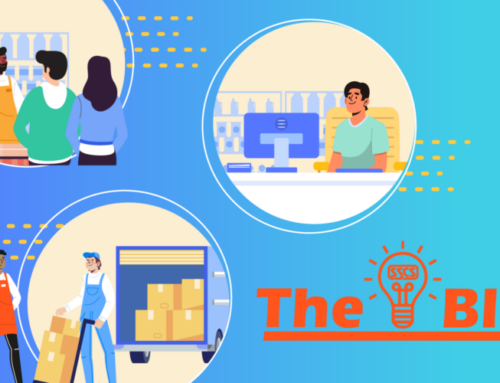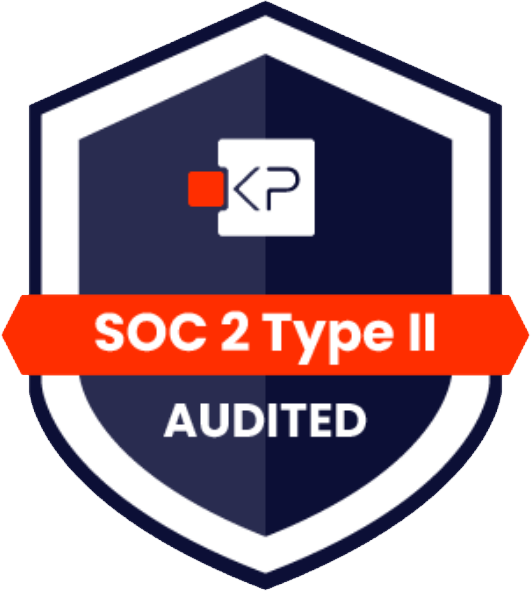Sense, Analyze, Act
Customers of SSCS should be no stranger to Zebra Technologies. Their QLn220 portable printer is an integral component of our complete inventory control system and with Zebra’s purchase of Motorola Solutions’ Enterprise business in October, 2014, the MC3000 series handheld computer—long SSCS’s go-to platform for scanning and recording deliveries and physical inventories—also became part of Zebra’s product set.
 As that acquisition implies, Zebra Technologies is initiating a company-wide transformation in an effort to meet the evolving needs of the dynamic markets it serves. In addition to the C-store industry, Zebra’s customer base incorporates such diverse channels as retail, manufacturing, healthcare, transportation logistics, and hospitality. Known for decades as a leading provider of printing, labeling, and barcode solutions, the company finds itself poised to enter a new era with broadened goals that help maximize the operational effectiveness of its customers, with a concerted focus on mobility.
As that acquisition implies, Zebra Technologies is initiating a company-wide transformation in an effort to meet the evolving needs of the dynamic markets it serves. In addition to the C-store industry, Zebra’s customer base incorporates such diverse channels as retail, manufacturing, healthcare, transportation logistics, and hospitality. Known for decades as a leading provider of printing, labeling, and barcode solutions, the company finds itself poised to enter a new era with broadened goals that help maximize the operational effectiveness of its customers, with a concerted focus on mobility.
What exactly does this all mean to the C-stores that rely on Zebra’s technologies, now and in the future? We sat down with Rob Armstrong, Zebra’s Head of Americas Marketing, to find out and along the way get a sense of where the company is going and how it intends to help improve our industry.
This two-part interview will be run on consecutive Thursdays. Look for Part 2 next week.
SSCS: Why don’t we start by having you tell us a little bit about Zebra Technologies, perhaps framing it in the context of purchasing Motorola’s enterprise business which provides the hand-held technology on which our customers rely.
Rob Armstrong: Zebra’s been going through an exciting transformation over the past year or so. After a long legacy of success with a focus on printers and related products, our definition of “What does Zebra do?” has come to include significantly more. In the broadest terms we’re making complete businesses as smart and connected as the world we live in.
As part of this we’re tracking three megatrends in the industry: connected devices, mobility, and cloud. When combined, those three components generate a ton of invaluable “always on” data. We’re positioning Zebra now and in the future to help our customers interpret that data and leverage it to their best advantage.
 The legacy of Zebra was always, at its core, about linking the physical world to the digital world. Now we’re in a stronger position to do so than ever before. Our goal is to develop solutions that can help our customers sense, analyze and act across several aspects of their operations using data from multiple sources through our own capabilities and through our work with partners like SSCS.
The legacy of Zebra was always, at its core, about linking the physical world to the digital world. Now we’re in a stronger position to do so than ever before. Our goal is to develop solutions that can help our customers sense, analyze and act across several aspects of their operations using data from multiple sources through our own capabilities and through our work with partners like SSCS.
SSCS: Can you give us a real world example of “Sense-Analyze-Act”?
RA: Let’s use a mobile technology as an example. Capturing information with a scan or sensor is “Sense”. Once I get that information into my back end database, that’s “Analyze”. Equipping the user with rendered output that helps them make the right decisions on behalf of the operation would be “Act”.
SSCS: Describe the makeup of your customer base.
RA: Our customer base is quite broad. Both our legacy printing and enterprise businesses have been around a long time and have had decades to diversify. As a result we can bring more technologies forward and apply them across numerous vertical markets, sometimes in applications and use cases that we didn’t originally envision ourselves. These verticals include retail, which is where C-stores and related businesses like quick service restaurants come into play, as well as manufacturing, hospitality, transportation logistics, and healthcare.
What our customers once expected from separate businesses are now integrated together into one. Going forward this allows us to offer innovative products and services that complement each other and work better together. Enterprise-class handheld computers and portable printers, once available separately from two different companies, would be one good example of integration with a potential benefit for the C-store industry.
SSCS: Our customers use your MC3000 Series mobile computers for scanning and recording inventory records, but there has been increasing conversation that the functions performed by these computers may one day be accomplished by what we think of mobile consumer electronics—smartphones, tablets, and the like. What’s your take on this line of thinking?
RA: A lot of the past technology that’s been deployed in the C-store revolves around direct store deliveries and inventory-related processes, which makes it all about supply chain efficiency. To achieve this efficiency, C-stores face some unique challenges. The operator has to find the right balance between front of store and back office. There is no IT staff on site. Factors like these have greatly influenced the type of technology that we’ve deployed within the C-store segment. These technologies tend to emphasize durability, reliability, and the ability to manage processes remotely.
The technology we provide to the C-store will continue to incorporate ruggedness, reliability, and the capability for remote management, but what we are going to see is a continued evolution in the user interface, which will be driven by the operating system. For example, we’ve just introduced a new MC3200 mobile computer that leverages the Android operating system in addition the the Windows CE platform that previous generations of the MC3000 series utilized. It’s not just a stock Android system, it’s one that comes with a whole set of utilities and tools, making Android as robust, reliable, and secure as previous versions of our mobile technology. We now have the broadest rugged Android mobile computing product line in the industry and have seen excellent growth in this segment of our portfolio as customer expectations and buying behaviors shift.
It’s a nice platform, because it retains the form with which the user is familiar, including carry capabilities, the ability to utilize a cradle for charging, and print output. It’s a modern, networked, “Internet of Things” solution driven by the expectations that have grown out of what the C-store associates are using in their everyday life.
For Part 2 of this interview, click here.
If you liked this edition of the SSCS Interview, you might like to click on the following links:
The SSCS Intervew: Dr. Chris Gray of Saatchi & Saatchi X
The SSCS Interview: Noam Kimelman of Fresh Corner Cafe
The SSCS Interview: Chewy the Parker’s Elf
The SSCS Interview: Steve Baus of Baus Systems, LLC
The SSCS Interview:Mark Jordan of Refuel, Inc.
The SSCS Interview: Mark Johnson of Loyalty360






Leave A Comment